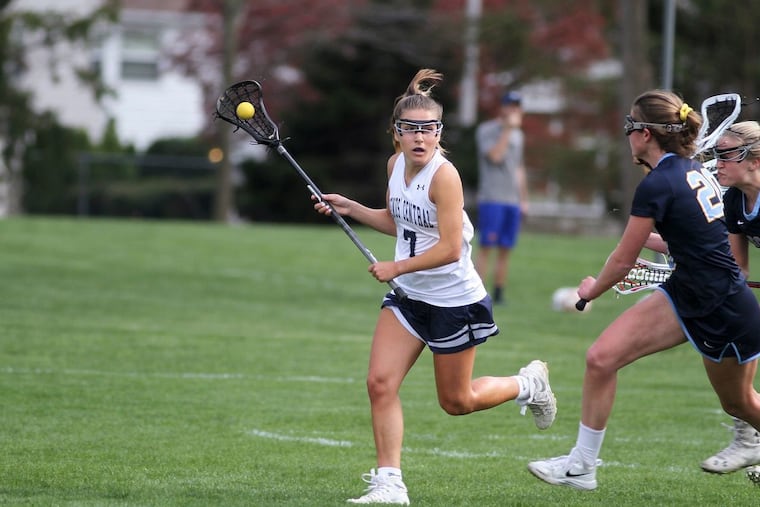One in six kids who get a concussion will have another within two years, CHOP study finds
The study found that risk of repeat injury among 11 to 15 year olds was almost twice as high as the risk for 9- to 11-year-old children, possibly because of more involvement in sports and other activities.

Identical twins Hayden and Hannah Posencheg of Newtown Square have much more in common than just their hazel eyes and sandy hair. Serious student athletes, they both love sports. They both also have experienced multiple concussions – five for Hayden, three for Hannah.
Yet thanks to physical therapy, medical monitoring and symptom management, the sisters will play women’s lacrosse at Dickinson College in the fall.
“I still play fearless,” said Hayden, 20, who plays attack and midfield. “I still play hard.”
The Posencheg sisters are among the faces behind a new study by Children’s Hospital of Philadelphia (CHOP). Its message is sobering and cautionary, but also hopeful:
Children who have a concussion are at heightened risk of having another, yet, according to the study’s lead author, Christina Master, that doesn’t mean these youngsters have to give up sports or other activities they love.
The new study from CHOP’s Center for Injury Research and Prevention and the Centers for Disease Control and Prevention found that one in six children ages 5 to 15 who got a concussion will experience a repeat concussion within two years.
The study, published Tuesday in the Journal of Pediatrics, also found that risk of repeat injury among the oldest kids was almost twice as high as the risk for 9- to 11-year-old children, possibly because of more involvement in sports and other activities.
The study reviewed health records of 536 CHOP patients.
A recovery period of more than 28 days correlated to a 65 percent higher risk of repeat concussion compared with patients with a recovery of less than seven days. In addition, patients who experienced more than 10 symptoms — headache, fatigue, nausea, to name a few — had twice the risk of repeated injury than youngsters with less than two symptoms. A possible explanation could be that the children with longer recovery times or more symptoms had more serious concussions. However, the study didn’t look at the severity of the first concussion, but rather the likelihood of a repeat injury.
“Knowing a child’s increased risk for repeat concussions can help families make better decisions about their child’s health,” said Master, co-lead for CHOP’s concussion research program and a sports medicine pediatrician.
Overall, 16 percent of the children who had one concussion had at least one more concussion within two years. Broken down by age, the risk of repeat injury was almost 10 percent for kids ages 5 to 8, nearly 11 percent for 9 to 11, and close to 20 percent for 11 to 15.
The findings can help advise parents and care providers, Master said. Yet she said the study’s take-away message should be that youngsters don’t need to be kept from taking part in sports or other physical activities because they have had concussion.
“We’re certainly not recommending you put kids in a bubble and contribute to the trend of sedentary lifestyle in the U.S. these days, but we would say there’s also that balance,” Master said.
The Posencheg sisters both suffered concussions while in high school. As part of their treatment, they underwent physical therapy to increase strength and coordination to help ward off future injury. They both still experience headaches sometimes, but they’ve learned how to manage their symptoms.
Now as collegiate athletes, they say they don’t dwell on their past injuries, but they’ve learned the importance of taking the necessary time to heal.
“You really have to be in tune with your body and make the decisions that are going to help you in the long run,” said Hannah.
Concussions are serious and require proper care, but there can still be a sporting life after them, according to her doctor.
“Our message is, concussions are real. Kids are not faking it. It really is a brain injury, and we need to take it seriously, and yet we don’t have to see concussions as the end of the world,” said Master. “We can actually identify them, manage them, treat them, and get kids back to being really active.”